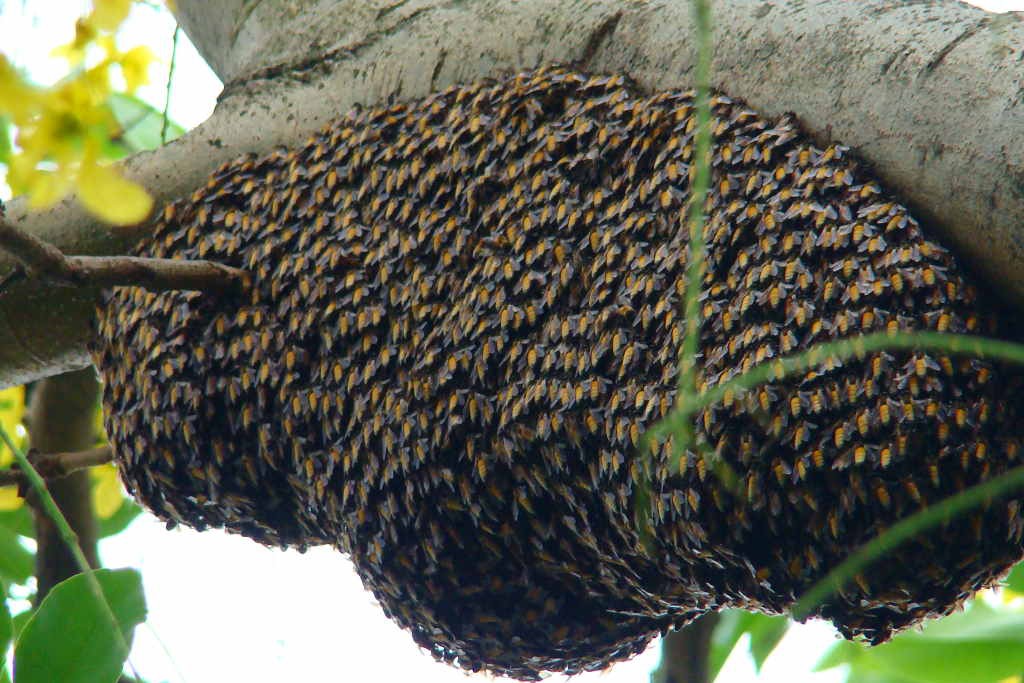
Honey comb
The honey comb, one of nature’s most intricate and efficient structures, can be found within the diverse ecosystem of the Great Himalayan National Park (GHNP). Created by honeybees, it serves as a storage unit for honey, pollen, and larvae. The remarkable hexagonal design of the honeycomb allows bees to maximize storage while minimizing the use of materials. This structural efficiency has fascinated not only scientists but also wildlife enthusiasts who study the park’s vibrant biodiversity. The geometric precision of honeycomb structures ensures optimal space usage, making it a perfect example of natural ingenuity, even in the varied ecosystems of GHNP.
The Structure and Purpose
In the GHNP, honeybees construct their honeycomb with individual hexagonal cells made of beeswax. These cells are crucial for storing honey and pollen, which are essential for the survival of the hive. Moreover, these cells offer a safe haven for the queen bee to lay her eggs, ensuring the growth of the colony within the park’s protected environment. This unique structure is not only functional but also forms an integral part of the food web, as honeybees contribute to the pollination of plants across GHNP.
Each cell of the honeycomb is a perfect hexagon, and this design maximizes space while minimizing the amount of wax needed. The strength and stability of the honeycomb structure make it perfectly suited to the needs of the bees living in the diverse climatic conditions of the Great Himalayan National Park.
Why Cells Are So Efficient in the GHNP
One of the most impressive aspects of the honeycomb within GHNP is its hexagonal design, which allows bees to utilize the least amount of wax possible while maximizing honey storage. This efficiency has not only allowed honeybees to thrive in the park’s ecosystem but has also inspired human innovations in architecture and design. The strength and space-saving properties of the honeycomb pattern have led to its use in sustainable design practices, even within the region’s human settlements.
Moreover, the bees’ ability to create such an efficient structure with minimal resources highlights the brilliance of nature’s design. The honeycomb is also biodegradable, making it an eco-friendly component of the GHNP ecosystem.
The Importance of Honeycomb
Beyond its direct benefits to honeybees, the honeycomb plays a significant role in the broader ecosystem of the Great Himalayan National Park. Honeybees, as pollinators, contribute to the pollination of various flora, ensuring biodiversity and aiding in the growth of plants that support a wide array of wildlife. This is vital for maintaining the park’s ecological balance, especially in such a biodiverse environment.
The honey produced within the honeycomb also has cultural, medicinal, and economic value, which is recognized by local communities living around GHNP. Honey and other bee products are often used in traditional remedies and local products, further connecting the bees’ work to the human inhabitants of the region.
By supporting plant reproduction through pollination, honeycomb indirectly sustains the agricultural and wildlife systems in and around GHNP. Honeybees and their honeycombs are, therefore, essential to maintaining the health and vitality of the entire ecosystem.
Conclusion:
In conclusion, the honeycomb is not just a vital structure for bees within the Great Himalayan National Park—it is also an essential element of the region’s ecosystem. Its geometric brilliance and efficiency make it an ideal example of nature’s ingenuity, contributing to biodiversity, pollination, and sustainable resource use in the park. As we continue to study the wonders of GHNP, the honey comb serves as a reminder of the interconnectedness of all life within this UNESCO World Heritage site.



